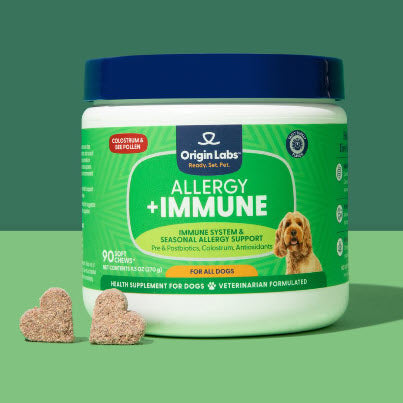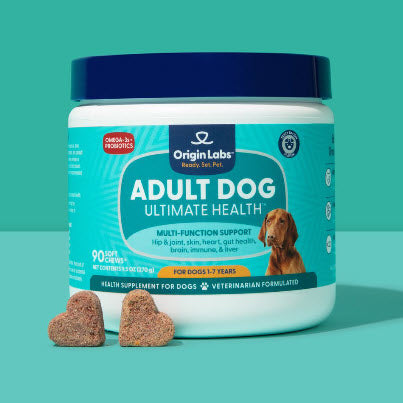Introduction
Many dog owners often wonder, can dogs eat ham? Understanding the risks and potential health issues associated with feeding ham to dogs is crucial before sharing your favorite meals with your canine companion. While it might seem harmless to share a slice of ham during dinner, the reality can be quite different.
Feeding table scraps to dogs is a common belief rooted in tradition. However, this practice may not always be safe or healthy for them. Ham, in particular, poses several risks due to its high fat and salt content. These elements can lead to serious health issues such as pancreatitis and gastrointestinal upset.
Dog-safe alternatives to ham exist and will be discussed in detail later in this article. These alternatives provide a way to treat your dog without compromising their health. For instance, try incorporating Adult Dog Supplements into your dogs diet to provide them with the support they need. Understanding these risks and exploring safer options will help you make informed decisions about what’s best for your furry friend.
Additionally, as your dog ages, their dietary needs change. It's important to consider this when choosing their supplements. Specialized products like Senior Dog Supplements formulated specifically for older dogs can provide the necessary health support tailored to their age.
The Dangers of Feeding Ham to Dogs
Feeding ham to your dog can lead to a serious condition known as pancreatitis. This ailment occurs when the pancreas, a vital organ involved in digestion and insulin production, becomes inflamed. The high fat content in ham is a significant trigger for this inflammation.
1. Pancreatitis
Pancreatitis can manifest in dogs through various symptoms, making it essential for pet owners to recognize them early:
- Abdominal Pain: Dogs may exhibit signs of discomfort or pain in their abdomen, often indicated by restlessness or a hunched posture.
- Vomiting: Frequent vomiting is a common symptom, which can lead to dehydration if not addressed promptly.
- Decreased Appetite: A noticeable reduction in appetite can be an early warning sign. Dogs suffering from pancreatitis may avoid eating altogether.
Understanding these symptoms is crucial for timely intervention. If your dog shows any of these signs after consuming ham, seeking veterinary assistance is imperative. For dog owners looking to support their pets' health, considering ultimate health supplements tailored to puppies might be a beneficial alternative. These supplements provide the necessary health support tailored to growing puppies.
2. Gastrointestinal Upset
Ham can wreak havoc on a dog's digestive system due to its rich and fatty nature. Feeding ham to dogs often results in gastrointestinal upset, characterized by:
- Vomiting: Similar to pancreatitis symptoms, vomiting is a frequent issue caused by dietary indiscretion.
- Diarrhea: Fatty foods like ham can lead to loose stools or diarrhea, which can further exacerbate dehydration and nutrient loss.
These digestive problems not only cause discomfort but also pose risks of more severe conditions if left untreated.
3. Bone Hazard
Beyond the meat itself, ham bones present their own set of dangers:
- Choking Risk: Ham bones can splinter easily and become lodged in a dog's throat, leading to choking hazards.
- Intestinal Blockage: Ingested bone fragments can cause blockages within the gastrointestinal tract, necessitating emergency surgery.
- Oral Injuries: Sharp bone pieces can injure the mouth, gums, and internal organs, resulting in pain and potential infections.
Ham bones should never be given to dogs under any circumstances due to these severe risks.
4. Gastrointestinal Upset
Feeding ham to dogs can result in significant digestive issues. The high fat and salt content in ham is not easily digested by a dog's stomach, leading to gastrointestinal distress. Dogs have a more sensitive digestive system compared to humans, making them prone to vomiting and diarrhea when they consume foods that are too rich or seasoned.
Common Symptoms of Gastrointestinal Upset
When a dog consumes ham, the following symptoms may indicate gastrointestinal issues:
- Vomiting: Dogs might vomit soon after ingesting ham due to the high-fat content and spices often used in its preparation.
- Diarrhea: Salty and fatty foods can upset the balance of your dog's digestive system, causing loose stools or diarrhea.
- Lethargy: A dog that is suffering from gastrointestinal distress may appear unusually tired or inactive.
- Decreased Appetite: Digestive discomfort often leads to a reduced interest in food.
"The dangers of dogs eating ham cannot be overstated," says Dr. Jane Smith, a veterinarian with over 20 years of experience. "The richness of ham can disrupt their normal digestive processes, leading to acute symptoms like vomiting and diarrhea."
Why Ham Causes Digestive Problems
Several factors contribute to why ham causes digestive issues in dogs:
- High Fat Content: Dogs do not metabolize fat as efficiently as humans. A sudden intake of high-fat food like ham can overwhelm their pancreas, leading to conditions such as pancreatitis.
- Salt Content: Ham is typically cured with large amounts of salt, which can lead to excessive thirst and urination in dogs. In severe cases, it can cause sodium ion poisoning.
- Spices and Seasonings: Many hams are prepared with various spices, which can be harmful to dogs. Ingredients like garlic and onion powder are toxic to dogs and can exacerbate gastrointestinal distress.
- Preservatives and Additives: Processed meats often contain preservatives and additives that can irritate a dog's stomach lining.
Gastrointestinal Issues in Dogs
Understanding gastrointestinal issues helps pet owners recognize the risks associated with feeding inappropriate foods such as ham:
- Vomiting and Diarrhea: These are common responses when a dog’s digestive system encounters something it cannot process efficiently. Both symptoms deplete essential nutrients from the body and can lead to dehydration if they persist.
- Abdominal Pain: This may manifest as restlessness, whining, or reluctance to move.
- Bloating: Excessive gas production can cause discomfort and bloating in dogs, sometimes leading to more serious conditions like gastric torsion.
Monitoring your dog for these symptoms after consuming ham is crucial. If symptoms persist or worsen, consulting a veterinarian is essential for proper diagnosis and treatment.
5. Bone Hazard
Feeding ham bones to dogs can present serious health hazards. Despite the common practice of giving bones to dogs, ham bones are particularly risky and should be avoided.
Risks of Feeding Ham Bones to Dogs:
- Choking: One of the immediate dangers of giving ham bones to dogs is the risk of choking. Ham bones can splinter easily, creating sharp fragments that can get lodged in a dog's throat. This poses a significant risk of suffocation and requires urgent veterinary intervention.
- Intestinal Blockage: Ingested bone fragments can travel down the digestive tract and cause blockages. These obstructions may not only be painful for your dog but also life-threatening if not promptly treated. Symptoms of an intestinal blockage include severe vomiting, bloating, constipation, and lethargy.
- Oral Injuries: Ham bones can splinter into sharp pieces that may cause cuts or punctures inside a dog's mouth, gums, or tongue. These injuries can lead to infections and require medical treatment to heal properly.
Ham bones are unsafe for dogs due to their propensity to splinter and the associated risks:
- Splintering: Unlike raw bones that tend to be more pliable, cooked ham bones are brittle. When chewed on by dogs, these bones are likely to break into sharp shards that can cause internal damage.
- Bone Fragments: Once ingested, these bone fragments can create significant problems within the gastrointestinal tract. They may pierce through the intestines or stomach lining, leading to severe internal bleeding and necessitating emergency surgery.
Common Symptoms Indicating Trouble:
If your dog has ingested ham bones, watch out for these symptoms indicating potential complications:
- Abdominal Pain: Dogs might show signs of discomfort such as whining, restlessness, or adopting a hunched posture.
- Vomiting and Diarrhea: Persistent vomiting or diarrhea could indicate that bone fragments have caused irritation or blockage in the digestive system.
- Lethargy: A noticeable drop in energy levels might suggest that your dog is suffering from internal distress.
Given these risks, it’s essential to keep ham bones away from your furry friend. Instead of giving them potentially harmful treats like ham bones, consider safer alternatives such as:
- Rubber Chew Toys: These toys provide a safe outlet for your dog's chewing instincts without any risk of splintering.
- Dental Chews: Designed specifically for oral health, dental chews help clean teeth while satisfying the urge to chew.
Avoiding ham bones is crucial for maintaining your dog's health. Prioritizing safer treat options will ensure they stay happy and healthy without facing unnecessary risks from dangerous foods like ham.
Safer Alternatives to Share With Your Pooch
Importance of a Balanced Diet for Dogs
Ensuring your dog has a balanced diet is crucial for their overall health and longevity. While occasional treats are fine, they should be given in moderation and should not replace the core components of your dog's diet. Feeding table scraps or foods high in fat, like ham, can lead to various health issues.
Healthy Fruits
Many fruits are safe and beneficial for dogs when given in moderation:
- Apples : Rich in vitamins A and C, apples are a great crunchy treat. Remove seeds and core before serving.
- Blueberries: Packed with antioxidants, blueberries can be given fresh or frozen.
- Bananas: High in potassium, bananas make for a sweet snack. Offer in small amounts due to their sugar content.
Nutritious Vegetables
Vegetables can provide essential nutrients and fiber:
- Carrots: Excellent for teeth and low in calories. They can be served raw or cooked.
- Green Beans: Low-calorie option that can be steamed or given raw.
- Sweet Potatoes: Rich in vitamins A and C, they should be cooked and served plain.
Lean Proteins
Lean proteins are vital for muscle maintenance and energy:
- Chicken Breast: Skinless, boneless chicken breast is a lean source of protein. Cook thoroughly without seasoning.
- Turkey: Similar to chicken, turkey is another lean meat option. Avoid processed forms like deli turkey.
- Fish: Salmon and tuna offer omega-3 fatty acids but should be cooked to avoid parasites.
Preparation Tips
To ensure the safety of these alternatives:
- Wash all fruits and vegetables thoroughly to remove any pesticides or chemicals.
- Cut into bite-sized pieces to prevent choking hazards.
- Avoid seasoning as many spices can be harmful to dogs.
- Cook meats thoroughly to eliminate bacteria like Salmonella or E.coli.
Offering these dog-safe alternatives to ham not only diversifies your dog's diet but also ensures they receive essential nutrients without the risks associated with high-fat foods like ham.
Conclusion
Taking care of your furry friend involves making smart decisions about what they eat. It's important to know the facts before sharing human food like ham with your dog. Can dogs eat ham? While it may seem harmless, the high fat content and potential for pancreatitis make it a risky choice.
When it comes to your dog's health, it's best to prioritize nutrition and safety over indulgence. Instead of wondering can dogs eat ham slices, explore other options that provide nutrients without any negative consequences.
Remember to always seek advice from a vet regarding your dog's diet and treat selection. They can offer personalized recommendations based on your pet's specific requirements, ensuring their well-being. By being mindful about what you feed your dog, you're playing an active role in keeping them healthy and happy.
FAQs (Frequently Asked Questions)
Can dogs eat ham?
Feeding ham to dogs can pose several risks and potential health issues, including pancreatitis, gastrointestinal upset, and bone hazards. It's important to understand the dangers associated with feeding ham to dogs before considering it as a treat.
What are the dangers of feeding ham to dogs?
The dangers of feeding ham to dogs include triggering pancreatitis due to its high fat content, causing gastrointestinal upset leading to vomiting and diarrhea, and posing a hazard with ham bones that can result in choking, intestinal blockage, or oral injuries.
Are there safer alternatives to ham for dogs?
Yes, there are several dog-safe alternatives to ham that can serve as healthy treats for dogs. These alternatives include fruits, vegetables, and lean proteins that can be prepared properly to ensure they are safe and nutritious for dogs.
What guidelines should be followed when feeding dogs during the holiday season?
It's important to maintain a pet-safe environment during holiday gatherings and avoid potential hazards. Consulting a veterinarian before making any dietary changes or offering human foods to dogs is crucial for ensuring their health and well-being during the holiday season.
Can dogs have ham slices?
While it may be tempting to share ham slices with your dog, it's essential to prioritize their health and nutrition over indulgence in unsafe foods like ham. Consulting a veterinarian for personalized guidance on suitable diets and responsible treat choices for dogs is highly recommended.








